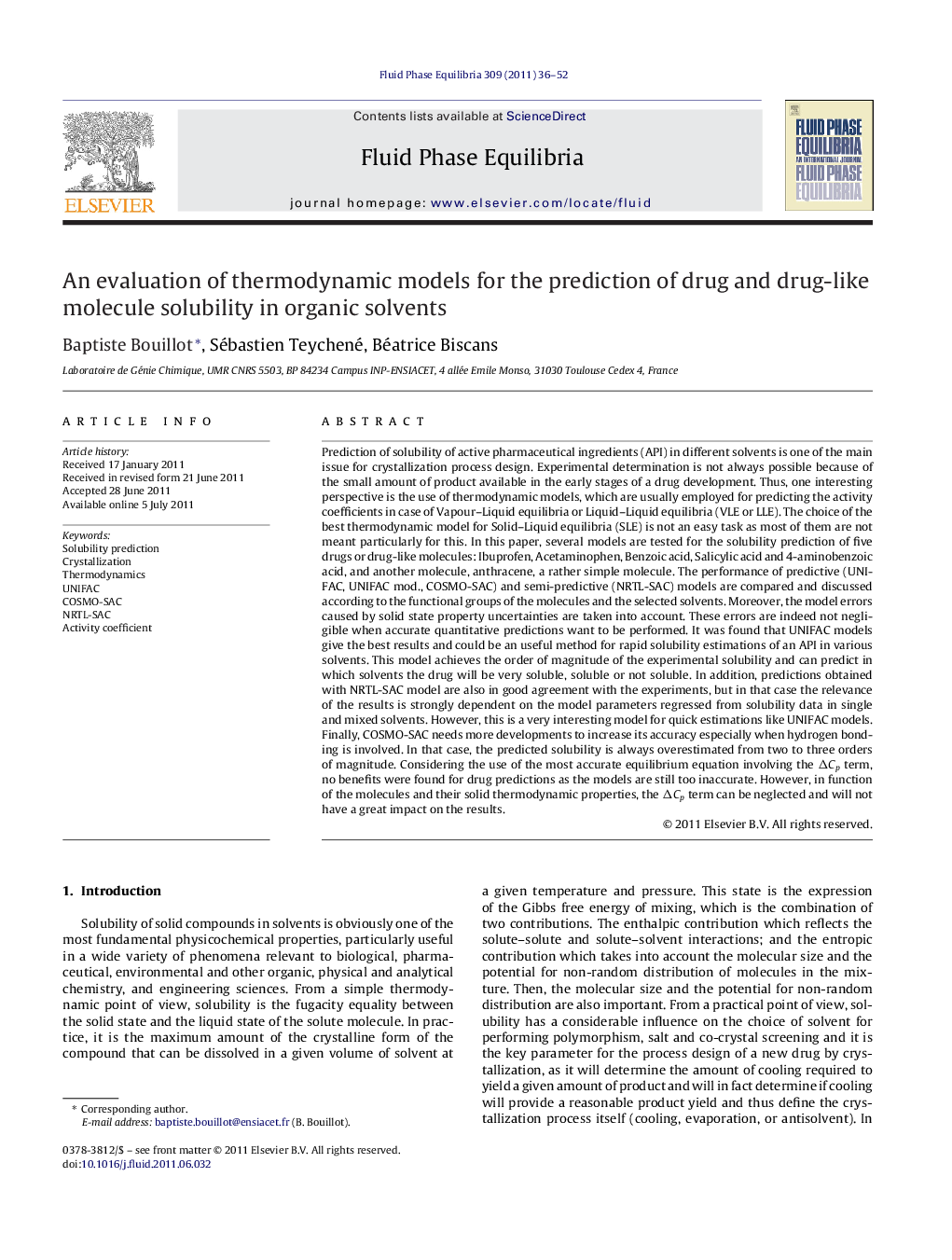| کد مقاله | کد نشریه | سال انتشار | مقاله انگلیسی | نسخه تمام متن |
|---|---|---|---|---|
| 202498 | 460606 | 2011 | 17 صفحه PDF | دانلود رایگان |

Prediction of solubility of active pharmaceutical ingredients (API) in different solvents is one of the main issue for crystallization process design. Experimental determination is not always possible because of the small amount of product available in the early stages of a drug development. Thus, one interesting perspective is the use of thermodynamic models, which are usually employed for predicting the activity coefficients in case of Vapour–Liquid equilibria or Liquid–Liquid equilibria (VLE or LLE). The choice of the best thermodynamic model for Solid–Liquid equilibria (SLE) is not an easy task as most of them are not meant particularly for this. In this paper, several models are tested for the solubility prediction of five drugs or drug-like molecules: Ibuprofen, Acetaminophen, Benzoic acid, Salicylic acid and 4-aminobenzoic acid, and another molecule, anthracene, a rather simple molecule. The performance of predictive (UNIFAC, UNIFAC mod., COSMO-SAC) and semi-predictive (NRTL-SAC) models are compared and discussed according to the functional groups of the molecules and the selected solvents. Moreover, the model errors caused by solid state property uncertainties are taken into account. These errors are indeed not negligible when accurate quantitative predictions want to be performed. It was found that UNIFAC models give the best results and could be an useful method for rapid solubility estimations of an API in various solvents. This model achieves the order of magnitude of the experimental solubility and can predict in which solvents the drug will be very soluble, soluble or not soluble. In addition, predictions obtained with NRTL-SAC model are also in good agreement with the experiments, but in that case the relevance of the results is strongly dependent on the model parameters regressed from solubility data in single and mixed solvents. However, this is a very interesting model for quick estimations like UNIFAC models. Finally, COSMO-SAC needs more developments to increase its accuracy especially when hydrogen bonding is involved. In that case, the predicted solubility is always overestimated from two to three orders of magnitude. Considering the use of the most accurate equilibrium equation involving the ΔCp term, no benefits were found for drug predictions as the models are still too inaccurate. However, in function of the molecules and their solid thermodynamic properties, the ΔCp term can be neglected and will not have a great impact on the results.
• We compare four thermodynamic models for drug solubility predictions.
• Results are very dependent on the interaction complexity.
• No model is accurate quantitatively, but some, like UNIFAC can give quick estimations.
• Influence of the thermodynamic properties is highlighted by the simulations.
• A criterion is proposed to determine when to use the most rigorous equilibrium equation.
Journal: Fluid Phase Equilibria - Volume 309, Issue 1, 15 October 2011, Pages 36–52